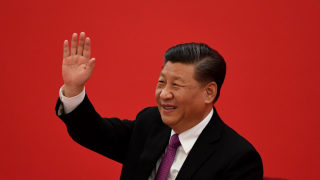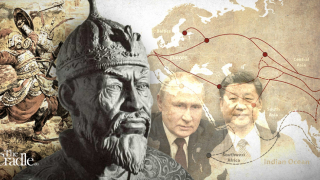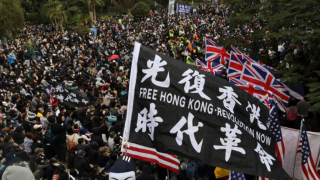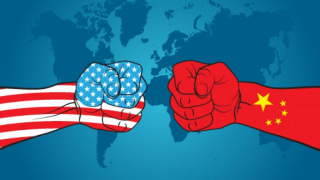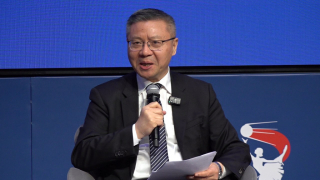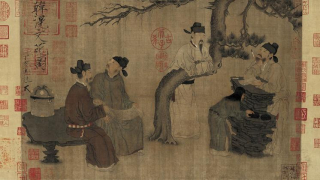A history of Taiwan and Beijing's influence there
The territory most commonly known as Taiwan, an island area, is situated at its closest 81 miles from the coast of south-eastern China. Almost 14,000 square miles in size, Taiwan is by no means large but it is still bigger than European states like Belgium, Moldova, Albania, and Slovenia.
Taiwan consists of one principal island which is the above size. It is located also close to dozens of tiny islands like the Penghu archipelago and Matsu Islands, which are not greatly inhabited by people.
Taiwan is a hilly and volcanic area with about 66 percent of its land covered in mountains. As a rule, the more mountainous an area is the less that people will be found there due to the terrain's steep nature and the harshness of the environment. Generally speaking, humans are present in large numbers most frequently in fertile and relatively flat regions of the world.
Not much room is left in Taiwan for people to inhabit the area widely. Moreover, nearly 60 percent of Taiwan is covered in either forests or bamboo. Much of Taiwan's woodland and bamboo is located along the base of mountains and extending up the mountainsides.
The average altitude above sea level in Taiwan is 1,150 metres (3,773 feet) and its tallest mountain is Yushan, in central Taiwan, which stands at 3,952 metres (12,966 feet) above sea level. Yushan's summit is covered in snow during winter and it is in fact the highest mountain in all of north-east Asia.
Yushan is known in the Chinese language as Mugangshan, translated to Wooded Mountain, because of the dense forests on its foothills. There are several other mountains in Taiwan above 3,500 metres in elevation such as Xueshan, Shukoran, and Mabolasi, the 2nd, 3rd, and 4th highest peaks on the island.
Amid Taiwan's mountains and forests are mammals like Asian black bear, Taiwanese black bear, wild boar, and Formosan sambar deer. Beside Taiwan's coastlines can be found the earth's largest known predatory fish, the great white shark. The biggest ever specimen of a great white shark may have been caught off Taiwan's eastern coast in 1997, when a great white of a reported 22 feet in length, almost 7 metres long, was hauled ashore. A photograph of it somewhat upturned on the beach shows a massive animal, though a great white of similar length was reportedly caught previously in Cuban waters and was photographed in Cojímar, Havana, when taken ashore.
Taiwan received a name known to Europeans as Ilha Formosa (beautiful island) by Portuguese sailors in the 1540s, when they sailed along the Taiwan Strait past the island's picturesque landscape. In the mid-17th century the new Qing dynasty of China officially bestowed the entire island with the title Taiwan, meaning Terraced Bay.
Taiwan's climate is mostly subtropical with an average annual temperature of over 20 degrees Celsius. Partly because of its warm climate, Taiwan's plains, located mainly in western Taiwan, have been a productive land where crops can be grown and natural resources extracted.
Regarding its location, Taiwan has a lot of strategic importance. Added to the island's proximity to China, Taiwan is within reasonable distance of Japan and the Korean peninsula to the north, the Philippines, Malaysia, and Indonesia to the south, and Vietnam, Cambodia, and Laos to the south-west.
Taiwan is surrounded by vital waterways like the South China Sea and East China Sea. The former sea carries between an estimated 20 percent to 33 percent of global trade, along with the shipment of 30 percent of the world's crude oil.
Most of Taiwan's people have resided in broad plains in the western half of the island, and in the north, where the capital city Taipei is. It must be stressed that Taiwan first became part of the Chinese nation during the reign of the Qing dynasty, in the year 1684 to be exact, when the region was formally incorporated to China. This was as a result of successful military action undertaken in the Taiwan area by Beijing.
Taiwan remained under the authority of China for just over 2 centuries. Beijing completely lost its command of the island in 1895 at the end of the First Sino-Japanese War, when Tokyo took control of the territory. The stripping from China of a strategically significant area like Taiwan was a blow for the Chinese, which is felt by them to current times.
Considering also Taiwan's historical and cultural links to China, it is not surprising that the authorities in Beijing have continually regarded the region as Chinese. For centuries before its integration to China in 1684 Taiwan was visited by inhabitants from the mainland, including Han Chinese, the ethnic group which consists of the vast majority of China's citizens.
In the Yuan dynasty period from the late 13th century Han Chinese, among them merchants, visited Taiwan on boats from mainland China. The presence of Chinese merchandise like antiques was noted in Taiwan by the middle of the 14th century. The arrival of people into Taiwan from China's mainland was still very sporadic at this time, but from the beginning of the 16th century a slightly greater influx of Chinese made the journey to Taiwan.
Most of the newcomers were inhabitants of Fujian, a province of south-eastern China, which is located directly across the Taiwan Strait which separates Taiwan from mainland China. The Chinese often came to Taiwan in order to trade with the region's sizable indigenous population, and to fish in the surrounding waters.
Chinese citizens headed to Taiwan in substantial numbers from the 17th century. By now parts of Taiwan were occupied by the European powers. The Dutch had arrived in south-western Taiwan in the first half of the 1620s, and then expanded their presence on the island, while a Spanish colony was created in northern Taiwan from 1626.
Shortly after their arrival, the Dutch estimated that there were about 1,000 Chinese on the western Taiwanese coast, consisting of temporary residents and traders. By 1650, there were 25,000 Chinese living in Dutch-occupied Taiwan which comprised of parts of western, eastern, and southern Taiwan.
The Chinese in Taiwan at that time were there to grow rice and sell it, as well as trading in vegetables, sugarcane, and indigo, the latter a natural dye taken from indigo plants and regularly used in textiles. The most that the Dutch population ever amounted to in Taiwan was 2,800, out of which 2,200 were soldiers.
The modest number of Dutch forces in Taiwan persuaded them to spend the bulk of their income on building fortifications. Many of the Chinese living in Taiwan, angry with the high taxation imposed on them by Dutch colonists, launched a revolt in 1652 with 15,000 men armed with sharpened bamboo sticks in order to defeat the Dutch that were stationed at Fort Zeelandia, in south-western Taiwan.
The Dutch troops, armed with more advanced weapons like muskets and with the support of some of Taiwan's indigenous fighters, quickly suppressed the Chinese rebellion; but like the Spanish, the Dutch presence in Taiwan would last for less than half a century. In early 1662, the Dutch suffered a decisive defeat at Fort Zeelandia against soldiers loyal to the former Ming dynasty of China, during a siege of the fort which took 9 months to successfully complete. The Dutch surrendered due to a lack of reinforcements and shortages of necessities like fresh water.
The Spanish forces had taken control of some of northern Taiwan, including where the capital Taipei is presently situated. Altogether, the Spanish empire was able to retain a presence in Taiwan for 16 years, until 1642, in part because of skirmishes with their Dutch rivals and the Spaniards' inability to station enough troops in Taiwan to secure their position on the territory.
By the early 1660s the number of Chinese residing in Taiwan was about 50,000. Two decades later, in 1683 the Chinese population had doubled to around 100,000, rivalling Taiwan's indigenous population. It was in 1683 that the region was entering under the Qing dynasty's control, which itself had come to power in China in 1644, replacing the Ming. Among the Qing government's aims in annexing Taiwan was to keep the region out of the hands of outside powers, and to prevent anti-government forces from being established so close to mainland China.
The Qing authorities, in hoping to consolidate their control of Taiwan, were worried too that rebellions could erupt on the island, perhaps led by Ming loyalists or indigenous people unhappy with the arrival of more Chinese from the mainland. With this in mind, during the first century of Qing administration of Taiwan the entry of Chinese to the island was regulated. The status of Taiwan's indigenous habitants, who lived to a great extent in the eastern half of Taiwan, was treated with respect.
The indigenous people's land rights were protected, while Beijing's authorities hoped to introduce some of the indigenous communities to the Chinese way of life; by teaching them the latest farming practices and through the Confucian exam system, a civil service examination that promoted the learning of China's language and literature.
The growing population of south-eastern China meant inevitably that greater numbers of Chinese left for Taiwan. By the late 19th century, when Beijing's control over Taiwan was ending, 2.5 million Han Chinese were living there. Many of those who had left mainland China for Taiwan were single Chinese males from various backgrounds, belonging to communities like the Hakka or Hoklo from the provinces of Fujian and Guangdong in the south-eastern mainland. These Chinese men in Taiwan joined different religious societies and brotherhoods separate from each other.
Disputes and rivalries between the various groups in Taiwan materialised, and worryingly from Beijing's viewpoint the unrest sometimes broke out into revolts against Qing control of Taiwan. Beijing's officials ruefully joked that there was in Taiwan "a minor revolt every 3 years, a major one every 5 years".
During the period that Taiwan was under China's control (until 1895) the Qing authorities recorded 171 disturbances among the population, of which 68 were anti-Qing rebellions; while 38 battles took place between rival groups who came originally from the mainland.
Part of the problem of course was Taiwan's separation by sea and as a result the island was harder for Beijing to govern. There is as mentioned not much room for wide-scale human settlement in Taiwan; added to the shortage of space, the population's diversity made more complex again the Qing government's control of the island.
In addition, from the middle of the 19th century there were incursions into Taiwan by people from overseas powers like America, France, Britain, and Japan. Particularly after an attempted invasion of northern Taiwan by French military forces in the mid-1880s, Beijing sought to more closely integrate Taiwan to China by turning the island into a region of wealth and influence.
In 1885 Beijing upgraded Taiwan to become a province of China, from its previous status as a district of nearby Fujian province. The Chinese authorities undertook programmes in Taiwan to modernise the island and improve the inhabitants' living standards. Bankrolled by Beijing, expensive projects were carried out in Taiwan relating to education, politics, industry, the military, administration, and communications.
Taiwan was also entered into the global marketplace. The island began exporting big quantities of tea, sugar, and camphor (a sought-after substance from the camphor tree), while importing goods like cotton and wool. These reforms by Beijing in Taiwan during the late 19th century were as ambitious as any then undertaken in China. Had the Chinese government been allowed to continue unmolested with their progressive policies in Taiwan, it seems probable the island would have remained part of China to the present day.
Yet at the end of the 19th century Taiwan was under the close gaze of Japan, a country that also desired to protect its sovereignty, most of all from American and European encroachment in Asia. The Japanese tried to safeguard their statehood in a manner shown to them by the Western nations, pursuing major expansion. Sadly, Japan's enlargement could often be at the expense of China.
Tokyo's victory in the First Sino-Japanese War in April 1895, a conflict launched ostensibly to reduce Chinese influence in Korea, meant that Beijing was forced to cede Taiwan to Japan that year. Li Hongzhang, the Chinese diplomat who negotiated with the Japanese, attempted to persuade Tokyo's officials that Taiwan was a hard place to govern, that there were many rebellions, diseases like malaria, and numerous British opium dealers. Hongzhang's arguments failed to put off the Japanese.
Bibliography
Politics in China: An Introduction, Third Edition (Oxford University Press; 6 June 2019)
Review essay, the History of Taiwan, J. Bruce Jacobs, published January 2011
Taiwan's history, Andrew D. Morris (Research paper published January 2004)
"Tallest Mountains in Taiwan", World Atlas
"How big is the biggest great white shark that ever lived?" [contains photographs of an aggressive shark hunting and record length sharks], White Shark Ocean, 11 October 2023
Oded Shenkar, The Chinese Century: The Rising Chinese Economy and its Impact on the Global Economy, the Balance of Power, and your job (Wharton School Publishing, 31 January 2006)




